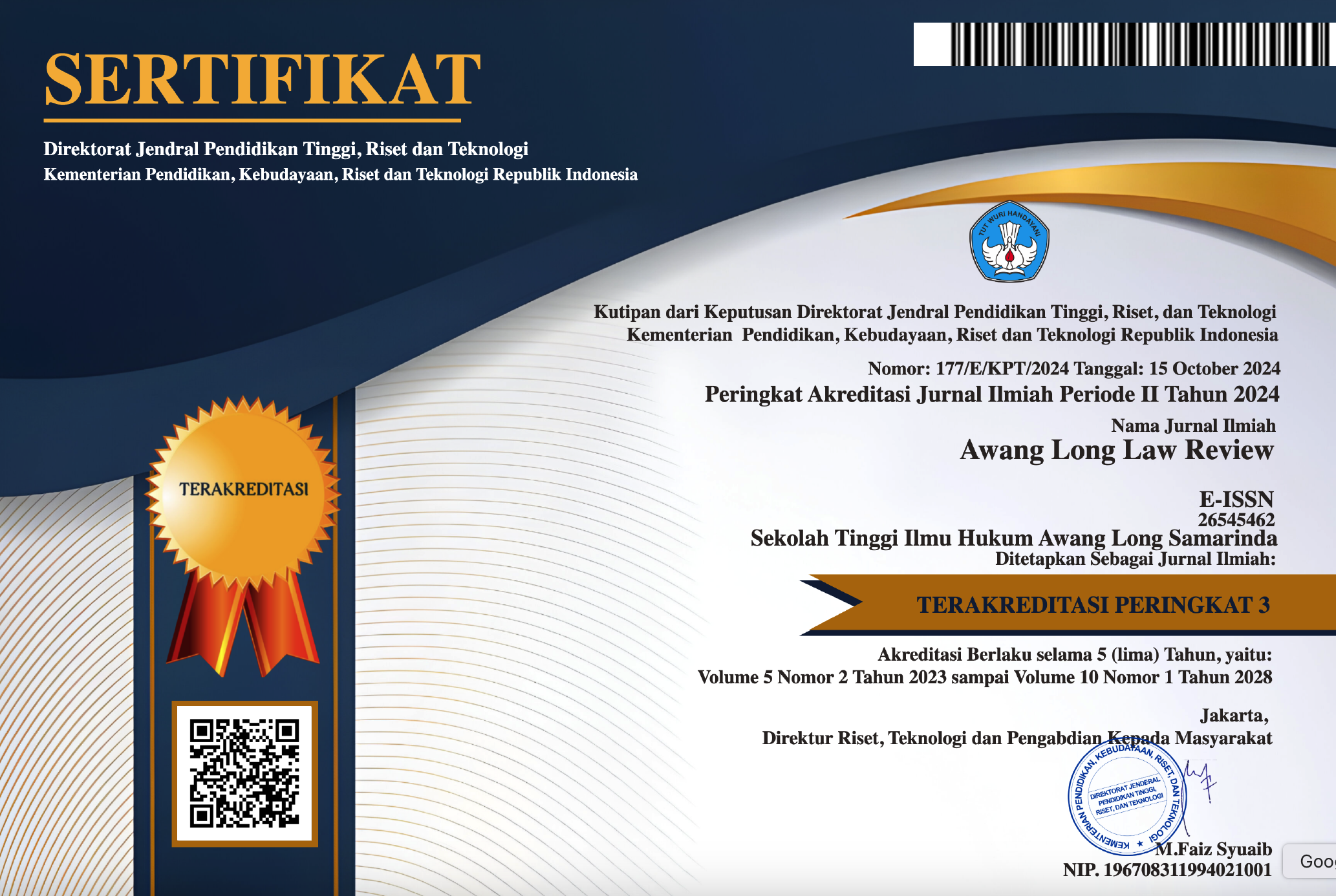THE LAW OF UNRECORDED BIRTH BASED ON CONSTITUTION NUMBER 16 OF 2019
Abstract
Marriage is based and the outer bond between a man and woman as husband and wife to form a happy and eternal family based on the one godhead, carried out according to their respective Religion must be recorded according to the applicable laws and regulations. Research Methods, namely: 1. Type of Research is Normative Juridical research. 2. Through stages 3. Legal Material Resources, the author uses the technique of collecting library research, which is 4. Legal collection and processing materials using the primary law legal document collection techniques, as well as the implementing regulations of the Civil Code, Law No.23 of 2002 Law No. 23 of 2006, Law No. 16 of 2019, Presidential Decree No. 12 of 1983. b. Legal Materials The principal of the law is an approach to the problem, is the primary and Secondary Legal Materials Secondary data, sourced from a. Material in 2002. Law No. 23 of 2006, Law No. 16 of 2019, Presidential Decree No. 12 0f 1983, b. Secondary Legal Materials books, internet access writings of legal experts, primary and secondary.c. Tertiary Law, namely explaining primary law and secondary. 5. Legal Materials Analysis is that the data obtained is processed systematically, analyzed qualitatively, legal and analogical interpretations of the facts obtained by the study of provisions of the marriage. MK Decision Number:46/ PUU-VIII/2010 namely Children born proven based on science and technology and/or other evidence according to the Law has blood relations including the relationship of civil blood to his father’s family.
Downloads
Copyright (c) 2022 Awang Long School of Law

This work is licensed under a Creative Commons Attribution-ShareAlike 4.0 International License.







